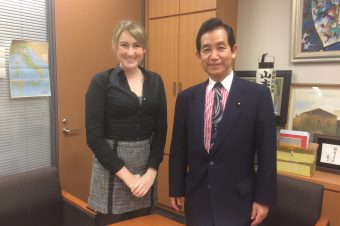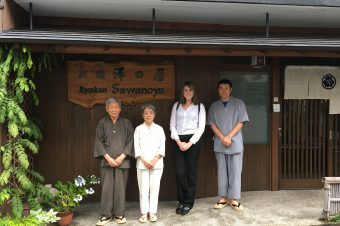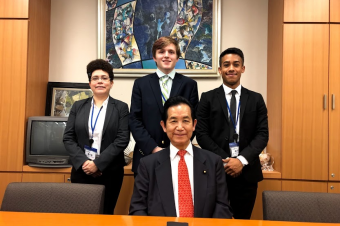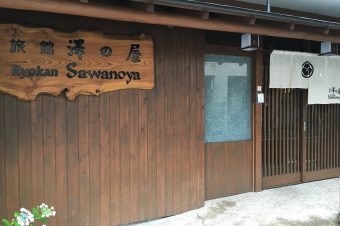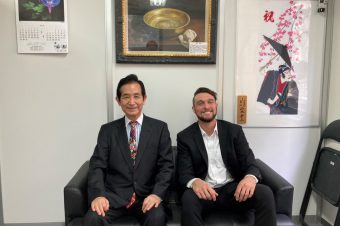Interview with Visit Tohoku
Pohan Chen(Visit Tohoku) & Michelle Alleman(Jtast)

PC: I just came here four months ago, because I wanted to do something for Tohoku tourism, especially after the 2011 earthquake, because I am a licensed guide, and I think as a licensed guide we have some sort of social responsibility. So, that is why I came here 4 months ago. I have lived in Japan for around seven years. Four years in Osaka, two and a half years in Tokyo, and now four months in Tohoku. I love Japanese temples and shrines very much, so I read a lot of books about them.
MA: This is my first time visiting the Tohoku area, so could you please tell me what you find charming and fascinating about the Tohoku region?
PC: So, I think there are three charming aspects, plus one thing that is not charming, but is very important. The first one is matsuri, the traditional events. The second one is people. And the third one is heritage. And the last one is not charming, but I think is a very important one, which is the spot of the earthquake. It’s not charming, but a lot of people are still living in this area that lived here before, and for me, that is very brave. They want to share their experience with everyone. They hope that a lot of people will come to the area so they can exchange their experiences.
So, for matsuri (traditional festivals), there’s a lot that are only in Tohoku. Like the Kanto Matsuri, and it’s a very amazing, awesome festival because they put large stacks of lanterns on the backs of people, and it’s very heavy. Something like over 50 kg. This festival is only in Tohoku. We also have the Tanabata Matsuri. So, I think the traditional events are very charming in Tohoku.
The second one is people. In our area, it’s the countryside, it’s not a modern city, and the people are so warm and welcoming. They always give me food for free, some goods for free, and they always like to talk to foreigners if they can speak any Japanese. They think that is amazing and will want to talk with you. I heard from other foreigners that they lost their way in Tohoku, but some random people helped them get to where they wanted to go by car for free. So, I think the way people are in Tohoku is very beautiful. And in Akita, there is an international school, Akita International University, and I have a lot of friends up there. I think the education in the countryside keeps the people of Tohoku very open-minded. They are always welcoming and charming. So, I think for Tohoku people, seeing foreigners is very amazing, but they are not afraid, they are always welcoming.
The last one is heritage. For example, in Japan there are only three or four places that exist from the Jomon Era about 4,000 or 5,000 years ago, and one of them is in Tohoku. I think tourists aren’t interested in this, because it’s history, and other Asian people don’t have an interest in Japanese history, but I think for me, because I live here and I love Japan so much, and I ready so many books, it’s very interesting for me.
MA: The Japanese government puts forth a lot of effort to attract foreign visitors. Last year, the number of foreign tourists reached over 20,000,000 visitors. The government aims to increase this number to 40,000,000 visitors by 2020. However, the portion of foreigners who visit the Tohoku area is only one percent. Based off your experience, what do you think is the reason for this issue? What previous initiatives have you tried and what will you try in the future?
PC: So out of that one percent, Taiwanese people make up over one-third. All of Japan is seeing growth, except Tohoku. Aomori is the most successful in our area, but all of the other areas aren’t growing, some even have negative growth. It’s very hard for us since we work for the Tohoku tourism industry. I think there are five main reasons: first, geography. Because Japan has always had the “golden route,” meaning the path through the famous destinations like Osaka, Kyoto, Nagoya, Tokyo. And on this route, there are other cities close to the route. So, these smaller cities also get a lot of people. But Tohoku is very far away and off on its own, so that’s why people don’t come here. It’s hard for them. For example, Kyushu is close to Korea and China, and for Koreans, it’s just a weekend trip to go to Fukuoka. And Hokkaido, even though it’s far north near Tohoku, they are full of resources. Tohoku has a lot of resources too, but I think the second problem is, the promotion is so late for Tohoku. For example, Tateyama is very famous for their snow wall. So, for Asians, if you say “snow wall,” they will think of Tateyama, because they started their promotion very early, maybe 20 years ago. But we have the same resource in Tohoku. But we only started to promote the snow walls only 3 or 5 years ago, and I think that’s so late, so many people don’t know that about our area.
The third problem is there are not enough historical contents in our area. For example, Kyoto and Nara have over a thousand historical areas. Of course, we offer historical areas, but not as many as Kyoto and Nara. Ours are very far and hard to get to. But in Kyoto, you just walk! Also, while the age of our destinations is a weakness, we can still use our strengths for the promotion of Tohoku. I’m not sure if you know, but Tohoku has a similar street view as Kyoto. The traditional architecture/building style is the same here as in Kyoto. We don’t need to highlight the negatives.
The fourth one is the earthquake. Especially for Asia, like Taiwan, China, and Thailand, they are really scared of the radiation. The Japanese government explained it’s no problem, but they don’t believe them. I think they need to explain it more carefully. I think it’s an important problem we need to solve. And I think we should use these areas as a tourism spot for education, for example, in Taiwan we also have earthquakes, so I think we can use these spots to provide some truth and education, to show them they could rebuild even if they have an earthquake or tsunami in their country too.
Right now, we only advertise to other Asian countries. But I think our tourism assets are better for Westerners. I don’t think Asian people are interested in Japanese history and culture. So, in the future, I think we will shift our focus to Western countries.
First, we will improve our promotion. Then, we will work on how we welcome people once they decide to come here. We need to be prepared. We don’t have guidebooks in any other language than Japanese. Finally, we need to prepare goods for people to purchase. For example, we are famous for apples, but foreigners cannot take apples back to their country, so maybe something like apple juice. We need more products. And not just create new ones, but use the resources we already have. We have to do the second and third step at the same time, because if people come here and we aren’t ready, then there is no point. Another issue we need to fix is transportation. We need to make it easier for people to get around and get to the places they want to go. However, unlike Westerners, Asians don’t like tour buses. So, we need to create something else for our target market.
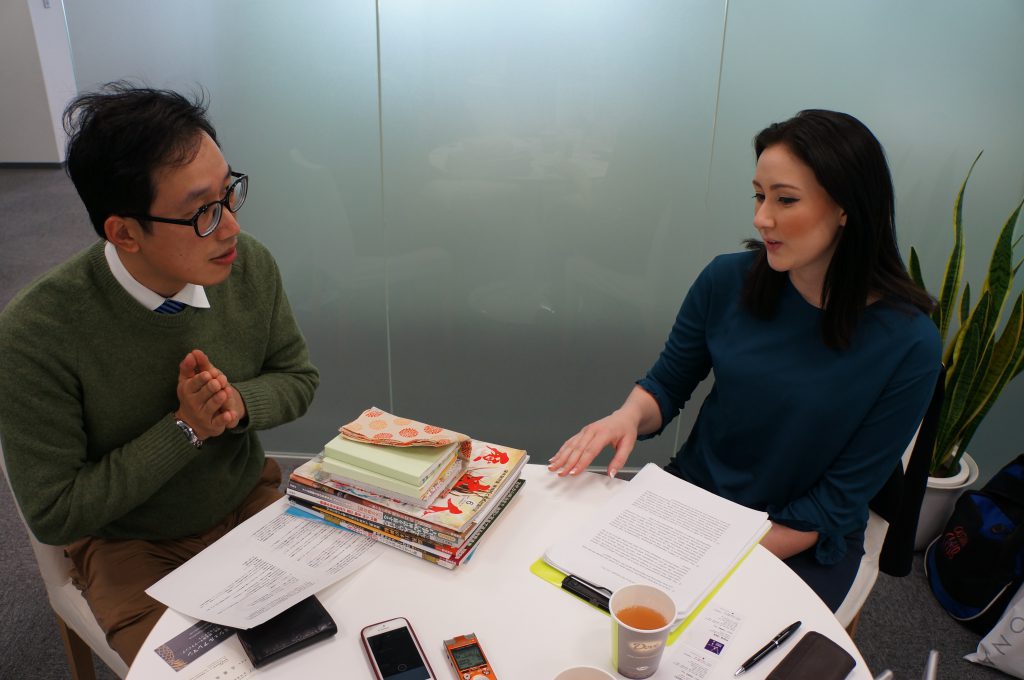
MA: We, JTAST, consider the main symbol of old culture to be temples and shrines. What do you think about the value of temples and shrines as tourist attractions?
Well, I can give you the Chinese and Taiwanese view. For us, there are six points: First, they want to see Japanese temples. As you know, Buddhism is from China, but now there is almost no Buddhist buildings or temples left in China. Only very few are left after the cultural revolution 50 years ago. So, Chinese people want to come to Japan to see the historic Buddhist temples, because it is their religion, but they can’t see it in their country.
Second, they want to go to shrines to see the torii gates and walk through them. They think this is very unusual and unique, because they can’t do this in any other country, there are only shrines in Japan.
Third is the mystery. In the Shinto religion, there is a god in everything. This is very mysterious. It is hard to believe in our countries. In Buddhism, the gods are people, or human-like. But in Shinto, objects are gods. So, it is very unique and attractive to us.
Fourth, and this is likely only me, I think it’s interesting because some shrines enshrine people that really lived and existed in this world, but other shrines, the deity is more mythological- we can’t know for sure if they really existed or not. I think it is very romantic.
Fifth is the buildings, both the architecture and the details; like the carvings, the paintings, the cultural properties, the beauty. It’s art. I think this part is very important and charming, especially because we can’t see it in our countries. I also think this is why asians and westerners go to Thailand, because their buildings are so beautiful.
Last is the surroundings. The nature- cherry blossom trees, gardens, things like this, they are so beautiful. That’s why many tourists, especially asians who have no interest in Japanese history, go to Kyoto or Nara- for beautiful scenery that is mixed with temples or shrines. The nature is especially beautiful in Tohoku, so if we can find some beautiful spots that are a mix of nature and temples or shrines, it would be a good resource.
